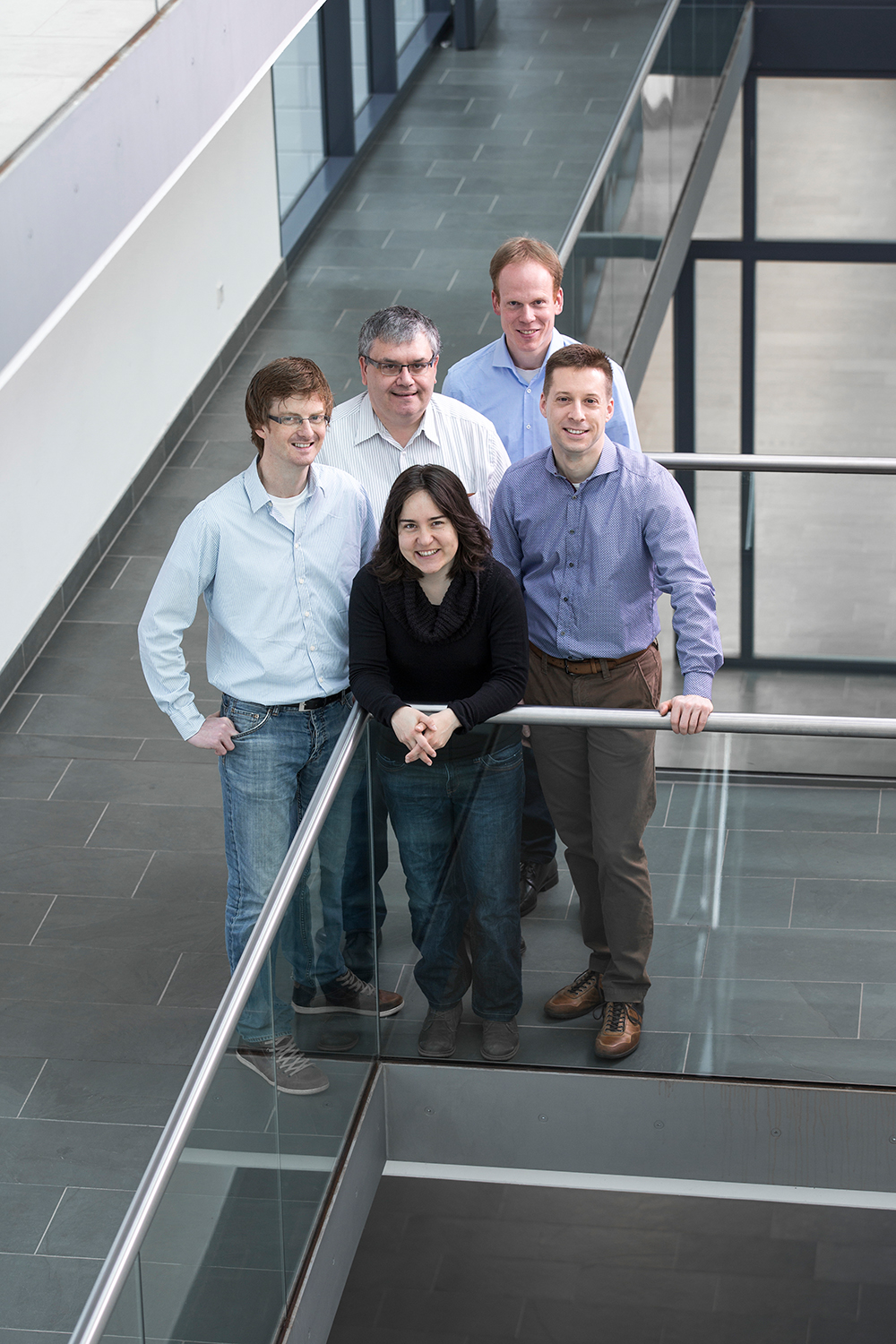Prestigous award for tailor-made Radiation Therapy
The Stifterverband Science Prize is awarded for scientific excellence in applied research projects conducted by Fraunhofer Institutes in collaboration with industry and/or other research organizations. Now this prize is given to a group of researchers from Fraunhofer ITWM.
Professor Karl-Heinz Küfer was amazed when he saw for the first time how radiation therapy for cancer patients was planned: »The processes physicians and physicists used in jointly planning radiation therapy reminded me of looking for objects in a dark room, groping around and then trying again,« recalls Küfer, a mathematician at the Fraunhofer Institute for Industrial Mathematics ITWM in Kaiserslautern, Germany. He recognized the potential for improvement and got together with physicians, physicists and information scientists to develop an alternative solution.
The result was an interactive and easy-to-operate software product. It shortens the duration of radiation therapy planning, makes finding a good balance between therapy potentials and possible side-effects easier and ultimately increases the patient‘s chances of recovery.
Every year in Germany approximately 483,000 people are diagnosed with cancer, with 222,000 cases ending fatally. This makes cancer Germany‘s second most common cause of death. Radiation therapy is used to treat more than half the cases. The radiation used damages cell DNA and thus inhibits their cell division or results directly in the death of the cell.
From a Trial-and-Error Strategy to a Predictable Solution
The objective of the therapy is to kill tumor cells while protecting healthy tissue.
In the past the physician formulated his wishes and the radiation physicist turned these demands into a therapy plan. If the physician wasn‘t satisfied with the results, the physicist did follow-up work. Gradually the optimum solution was found. »The new thing about the mathematical approach is that from the very beginning a variety of solutions is calculated; the physician can then choose the best solution for the patient,« explains Professor Jürgen Debus, radio-oncologist at Heidelberg University Hospital, who tested the developed software in clinical use.
In order to improve the process, Fraunhofer researchers Karl-Heinz Küfer, Dr. MichaelBortz, Dr. Alexander Scherrer, Dr.Philipp Süss and Dr. Katrin Teichert considered therapy planning as a multi-criterion optimization task, in this case a balanced compromise involving around ten to fifteen in part contradictory planning goals. »The principle of the Pareto solution is a better concept here than the previous trial-and-error strategy,« Karl-Heinz Küfer emphasizes. Such a solution which cannot be improved in terms of all criteria simultaneously. When one criterion improves, another criterion has to worsen in compensation. In the case of radiation therapy this means that if the tumor is to receive a higher dose of radioactivity, the surrounding tissue will be damaged more severely.
Research Partnership Leads to Successful Application
The software was developed under the leadership of the ITWM together with the German Cancer Research Center, Heidelberg University Hospital and Massachusetts General Hospital in a Harvard Medical School research partnership.
»With the new planning system the tumor can be better brought under control, since we can irradiate the tumor with a higher dose. This means the probability of permanently eradicating the tumor is also higher, and at the same time we can protect normal tissue which we might not have been able to protect at all in the past,« remarks Professor Thomas Bortfeld, who in 2011 put the multi-criterion optimization approach to clinical use at Massachusetts General Hospital in Boston for the first time, together with RaySearch Laboratories. By the end of 2015 vendor RaySearch Laboratories had sold several hundred systems all over the world. With additional licensing through world market leader Varian Medical Systems starting in 2016, the technology will in the future be available at over 20,000 therapy planning stations around the world.
Development of the interactive multi-criterion radiation therapy planning system earned the Fraunhofer researchers Karl-Heinz Küfer, Michael Bortz, Alexander Scherrer, Philipp Süss and Katrin Teichert and their research partners Thomas Bortfeld, Jürgen Debus, Wolfgang Schlegel and Christian Thieke the Stifterverband for German Science‘s 2016 award. The jury specifically recognized »the broad viability of the method in treating the widespread illness of cancer as well as the relevance to international markets.«
